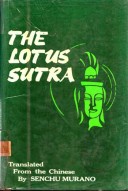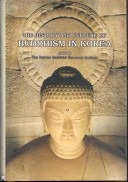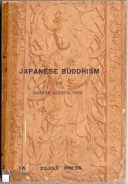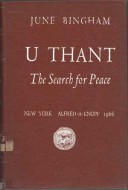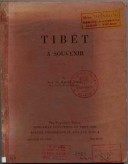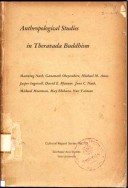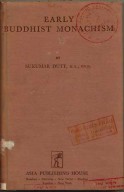Tìm Sách
Sách tiếng Anh-English >> The Lotus Sutra
Thông tin tra cứu
- Tên sách : The Lotus Sutra
- Tác giả : .
- Dịch giả : Senchu Murano
- Ngôn ngữ : Anh
- Số trang : 370
- Nhà xuất bản : Nichiren Shu Headquarters
- Năm xuất bản : 1974
- Phân loại : Sách tiếng Anh-English
- MCB : 1201000002056
- OPAC :
- Tóm tắt :
THE SUTRA OF THE LOTUS FLOWER
OF THE WONDERFUL LAW
Translated by SENCHU MURANO
NICHIREN SHU HEADQUARTERS
1-3-15 IKEGAMI, OTA-KU, TOKYO
The Lotus Sutra, in Sanskrit Saddharmapundarika sutra, is one of the most important sutras in Mahayana Buddhism.Its importance was already stressed by the famous Indian scholar Vasubandhu (320-400) who wrote an excellent commentary on it in the fifth century. The Sutra became still more famous and influential when it was translated into Chinese by Kumarajiva (34+-4'1j) in the year 406. After T'ien T'ai Chih-I (538-597) founded the T''ien School in China, based on the teaching expounded by this Sutra in the sixth century, it was considered one of the canonical Sutra of Chinese Buddhism, and few leaders of the schools founded in later times expressed their own philosophies without referring to it. Prince Shoroku of Japan (574-6:21) wrote a commentary on this Sutra the beginning of the sixth century. After T'ien-T'ai School of Gina was introduced to Japan by Saicho (767-822) and became the Tendai Sect of Japanese Buddhism; the Lotus Sutra became loved as literature among the people.
The Chinese title of the Lotus Sutra given by Kumirajiva was Miao-Fa-Lien-Hua-Ching, or Myohorengekyo in the Japanese pronunciation.This name was given the highest honour by Nichiren Shonin (1222-1282), who regarded this tide as a synonym of the Truth as well as the Eternal Buddha Himself The reciting of the Lotus Sutra has since then been-monopolized by the followers of Nichiren.
Japanese Buddhism of today is blamed for its disintegration. It is split into many sects and subsect. In addition many "new religions" have recently been created on the soil of the older Buddhist sects. But when we cross-examine the general aspect of the latter various denominations we find that they can be classified in not so many headings: Tendai, Shingon, Zen, Jodo and Nichiren. Tendai and Shingon practise esoteric rites. Zen practises zazen, or sitting in meditation. Judo followers devote themselves to Armitabha Buddha. The followers of Nichiren chant the Sacred Title. The reality is that some of the temples of one or other of these five sects possess elements under other headings. Some Tendai and Shingon temples recite the Lotus Sutra, and admit practice of the Nembutsu. Some Zen temples recite sutras including the Lotus Siara, practise esoteric rites and do not refuse even chanting of the Nembutsu, Some Jodo and Nichiren temples have esoteric elements. Only the Jodo sects do not recite the Lotus Sutra, but it is interesting to note that many Buddhist scholars specializing in the study of the Lotus Surra are jodo priests.
Senchu Murano, the translator of the Lotus Sutra, who has spent .more than twenty years on this most commendable work, is an old friend of mine. Born in 1908, he is one of the few Japanese Buddhist priests who write in English. He is a graduate of Rissho University, established by the Nichiren Sect, and of the University of Washington in the U.S.A. He was the editor of Young East, a Buddhist publication in English which appeared regularly in Tokyo from 1952 to 1966. He was the most appropriate man and one of the only Japanese scholars able to translate into English the very difficult Chinese version of the Lotus Sufra, because he is a professor of Buddhism at Rissho University and concurrently the chief priest of a Nichiren temple in Kamakura, whose daily duty is to recite the Chinese version of the Lotus Sutra.
Rene de Berval
CONTENTS
Preface
Introduction
Translator `s note
Introduction
CHAPTER:
- Expedients
- A Parable
- Understanding by faith
- The Simile of Herbs
- Assurance of Future Buddha hood
- The Parable of a Magic City
- The assurance of Future Buddha hood of the Five hundred Disciples
- The assurance of Future Buddha hood of the Sravakas Who have something more to learn and of the Sravakas Who have nothing more to learn
- The teacher of the law
- The appearance of a Stupa of Treasures
- Devadatta
- The encouragement of Keeping this Sutra
- Peaceful Practices
- The Appearance of Bodhisattvas from Underground
- The Duration of the Life of the Tathagata
- The Variety of Merits
- The Merits of a person who Rejoices at Heating This Sutra
- The merits of the teacher of the law
- The never-despising Bodhisattva
- The Supernatural power of the Tathagatas
- Transmission
- The Previous life of the medicine-King Bodhisattva
- The wonderful-voice Bodhisattva
- The Universal Gate of the Seeing-World-voice Bodhisattva
- The Dharanis
- King wonderful-Adornment as the previous life of a Bodhisattva
- The Encouragement of the Universal-sage Bodhisattva
Glossary I . Sanskrit words, English Buddhist terms and Translated proper name given in this translation
Glossary II. Important Chinese Buddhist Terms given in the Myohorengekyo
Index
 Facebook
Facebook
 Google
Google
 Google+
Google+
